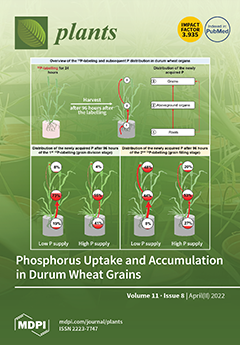Weed management has become the most important and inevitable aspect of crop management for achieving a higher rice yield. Nowadays, chemical herbicide application has become a popular practice for managing weeds in different rice cultures. However, herbicide application can have qualitative and quantitative impacts on soil microorganisms and soil enzymes, particularly in the case of new herbicide molecules and their indiscriminate use for a longer period. Further, different rice establishment methods also play a significant role in soil microbial population dynamics as well as soil biological properties. Keeping these in view, a field experiment was conducted at the Agronomy Main Research Farm, Orissa University of Agriculture and Technology (OUAT), India, during the
kharif season of 2016 and 2017, on the impact of crop establishment methods and weed management practices on soil microbial and enzymatic status. The field experiment was laid out in a split-plot design with three replications with four crop establishment methods in the main plot, viz., M
1, Direct Seeded Rice (DSR); M
2, Wet Seeded Rice (WSR); M
3,Unpuddled Transplanted Rice (NPTR); M
4, Puddled Transplanted Rice (PTR), and six weed management practices in the sub-plot, viz., W
1, Weedy check; W
2, Bensulfuron methyl 0.6% + Pretilachlor 6% (pre-emergence (PE)) 0.660 kg ha
−1 + Hand weeding (HW) at 30 days after sowing/transplanting (days after sowing/transplanting (DAS/T)); W
3, Bensulfuron methyl 0.6% + Pretilachlor 6% (PE) 0.495 kg ha
−1 + HW at 30 DAS/T; W
4, Bensulfuron methyl 0.6% + Pretilachlor 6% (PE) 0.495 kg ha
−1 + Bispyribac-Sodium (post-emergence(POE)) 0.025 kg ha
−1 at 15 DAS/T; W
5, Cono weeding (CW) at 15 DAS/T + hand weeding 30 DAS/T, and W
6, Brown manuring/Green manuring. The initial decline in the microbial population was observed due to herbicide application in NPTR and PTR up to 7 DAS/T and then it increased up to 28 DAS/T. There was a reduction in soil microbial and enzymatic status after the application of herbicides Bensulfuron methyl 0.6% + Pretilachlor 6% (PE) and Bispyribac-Sodium (POE) that again followed an upward graph with crop age. Significant variation in enzymatic activity and the microbial count was also observed among treatments involving crop establishment methods. The study revealed that improved microbial population and enzyme activity were noted in unpuddled transplanted rice under organic weed management due to favorable conditions, and chemical weed control initially affected microbial population and activities.
Full article






